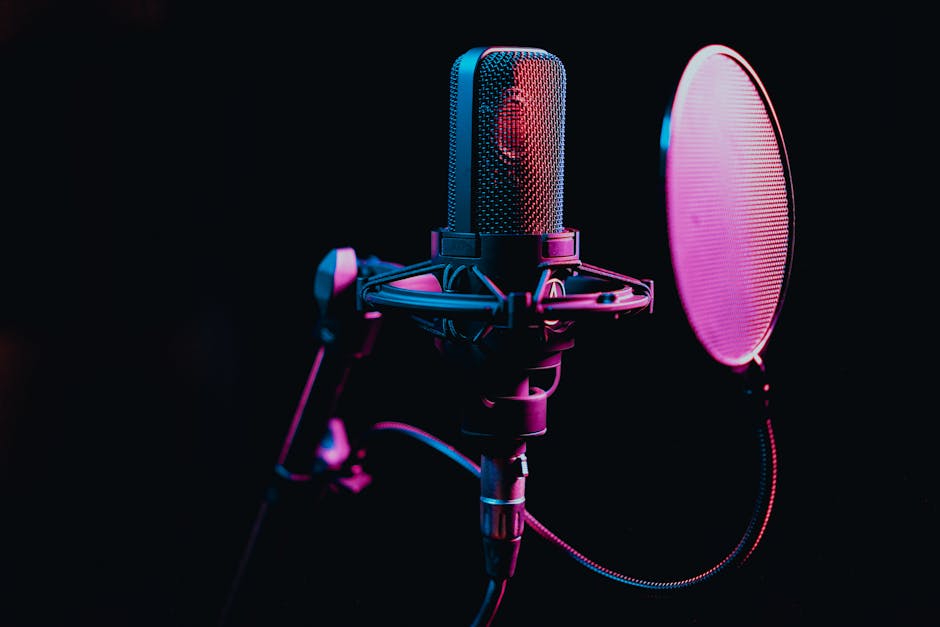How I Use Descript for Efficient Podcast Editing and Transcription.
How I Use Descript for Efficient Podcast Editing and Transcription
As a seasoned podcaster, I’ve spent countless hours in the trenches of audio editing, meticulously slicing waveforms and scrubbing through recordings. For years, my workflow was a patchwork of different tools – one for recording, another for editing, and a separate service for transcription. It was effective, but far from efficient. Then, I discovered Descript, and it fundamentally transformed how I approach podcast production. This isn’t just a review; it’s a deep dive into my personal, highly optimized workflow, showing you exactly how I leverage Descript to achieve unparalleled efficiency in both editing and transcription, turning what used to be a multi-day ordeal into a remarkably streamlined process.
My Workflow’s Starting Line: Turning Raw Audio into Descript’s Editable Canvas
The moment I wrap up a recording session, whether it’s a solo monologue or a lively interview, my first port of call is Descript. This initial step is critical for setting the stage for an efficient editing process. Instead of just importing an audio file into a traditional DAW (Digital Audio Workstation), I’m feeding Descript raw sound, knowing it will instantly transform it into a text document that becomes my primary editing interface.
Seamless Import and Instant Transcription
My process begins by simply dragging and dropping my audio file (usually an MP3 or WAV) directly into a new Descript project. The magic happens almost immediately: Descript’s AI transcription engine gets to work. Within minutes, for even an hour-long episode, I have a surprisingly accurate text transcript laid out before me, synchronized perfectly with the audio. This isn’t just a convenience; it’s a paradigm shift. Instead of listening to the entire recording multiple times to identify edit points, I’m reading. This is inherently faster for me, and for many, than purely audio-based editing.
Speaker Identification and Project Setup
One of the first things I do, especially with interviews, is to ensure accurate speaker identification. Descript does a decent job automatically, but a quick pass to label “Speaker 1” as “My Name” and “Speaker 2” as “Guest Name” is crucial. This not only makes the transcript far more readable but also streamlines later stages of editing and show notes generation. I also use this initial phase to set up my project structure, naming the composition clearly and ensuring it’s organized within my Descript folders for easy retrieval later. This meticulous but quick setup is foundational to maintaining efficiency throughout the entire podcast production workflow.
The Heart of Efficiency: My Text-Based Editing Strategy for Speed and Precision
This is where Descript truly shines and where I save the most time. Traditional audio editing involves staring at waveforms, zooming in, cutting, pasting, and often making mistakes that require undoing. With Descript, my editing process mirrors editing a Google Doc. If I can read it, I can edit it – and the audio follows suit.
Eliminating Filler Words and Unnecessary Pauses with a Single Click
My absolute favorite feature, and the biggest time-saver, is the “Remove Filler Words” function. After the initial transcription, I navigate to the “Actions” menu and select “Remove Filler Words.” Descript identifies all instances of “um,” “uh,” “you know,” “like,” and even excessive pauses. I can then review these suggestions, choosing to delete them all at once or individually. This transforms a rambling conversation into a tighter, more professional-sounding segment in mere seconds. It’s an incredible boost to efficiency, allowing me to focus on the content rather than the verbal tics.
Slicing, Dicing, and Rearranging Content by Editing Text
Beyond filler words, the core of my editing happens directly in the transcript. If a sentence needs to be removed, I highlight it and hit delete. If two paragraphs need to be swapped for better flow, I cut and paste the text. Descript automatically adjusts the underlying audio. This text-first approach is incredibly intuitive for anyone who has ever used a word processor. I find it far easier to spot redundancies, awkward phrasing, or logical jumps by reading the text than by trying to discern them solely from audio waveforms. This precision editing ensures my podcast episodes are concise, impactful, and keep listeners engaged.
Addressing Transcription Errors for Perfect Readability
While Descript’s AI transcription is excellent, it’s not always 100% perfect, especially with unique names, jargon, or heavy accents. As I edit the text, I simultaneously correct any transcription errors. This serves a dual purpose: it cleans up the audio (by removing the corresponding snippet if a word was misheard and needs to be completely rephrased) and, more importantly, ensures I have a perfectly accurate transcript for show notes, blog posts, and accessibility purposes. This integrated correction process is far more efficient than editing audio and then separately proofreading a transcript.
Polishing the Podcast Voice: My Descript Techniques for Enhanced Audio Quality
While Descript excels in text-based editing, it’s also surprisingly capable as an audio editor. I don’t use it for complex sound design, but for essential audio cleanup and enhancement, it’s more than sufficient and keeps my workflow entirely within one application.
Leveraging “Studio Sound” for Professional Polish
After the content is structured and cleaned up, my next step is to apply Descript’s “Studio Sound” effect. This AI-powered tool works wonders in reducing background noise, evening out volume levels, and making voices sound clearer and more professional, almost as if recorded in a studio. I apply it to all tracks, and then fine-tune the intensity if needed. It’s not a magic bullet for truly terrible recordings, but for decent source audio, it provides a noticeable improvement with minimal effort, saving me from diving into complex EQ and compression settings in a separate DAW.
Volume Leveling and Crossfades for a Smooth Listening Experience
Even with “Studio Sound,” some segments might have slightly varying volumes, especially in multi-speaker recordings. Descript offers simple volume controls for individual clips or entire tracks. I make quick adjustments here to ensure a consistent listening experience. Additionally, when I’ve made cuts, Descript automatically applies subtle crossfades, preventing abrupt transitions. If a cut feels too harsh, I can easily adjust the crossfade duration directly in the timeline, ensuring smooth, professional-sounding edits without the need for manual fiddling.
Basic Noise Reduction and Audio Cleanup
For more specific issues, Descript includes basic noise reduction tools. If there’s a persistent hum or hiss that “Studio Sound” didn’t fully address, I can use the noise reduction effect, often with a simple learn function, to target and minimize it. While not as powerful as dedicated audio repair software, it’s incredibly effective for common podcasting imperfections and keeps me from having to export, edit in another tool, and re-import. This integration is key to my efficiency.
From Edit to Export: My Streamlined Process for Transcripts, Show Notes, and Final Delivery
Once the audio is polished and the content is perfect, Descript continues to be an invaluable asset in the final stages of podcast production. This is where I prepare the episode for distribution, ensuring accessibility and discoverability.
Generating Accurate Transcripts and Show Notes
Because my editing process is text-based, I already have a near-perfect transcript. With speaker labels correctly assigned, I can export this transcript in various formats (SRT, VTT, plain text, DOCX) directly from Descript. This is invaluable for accessibility, SEO, and repurposing content. Furthermore, I




Post Comment